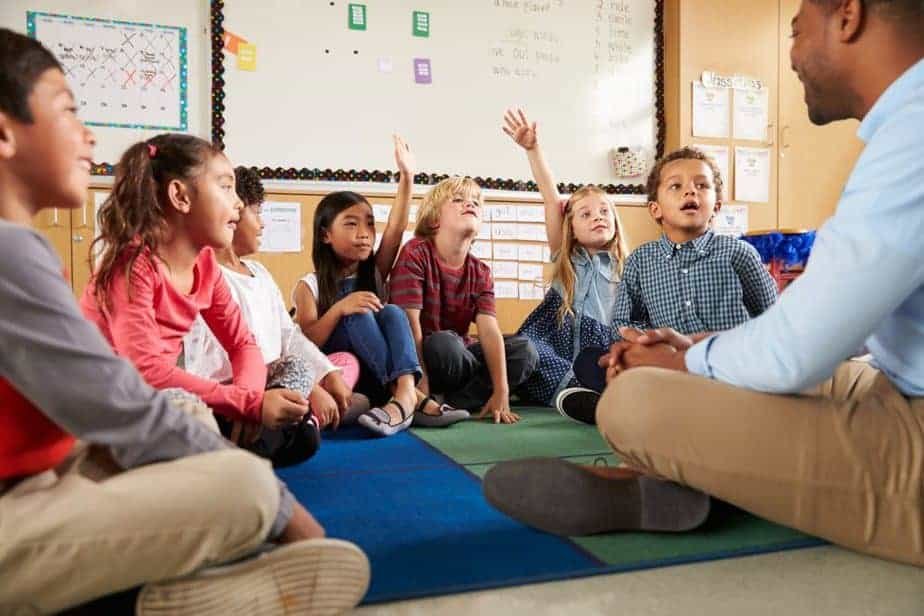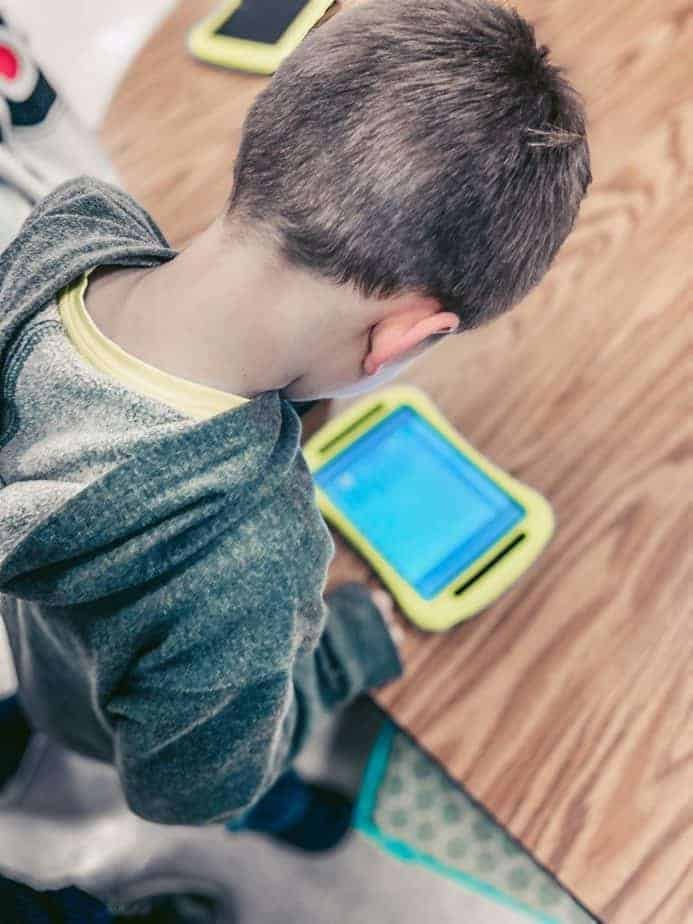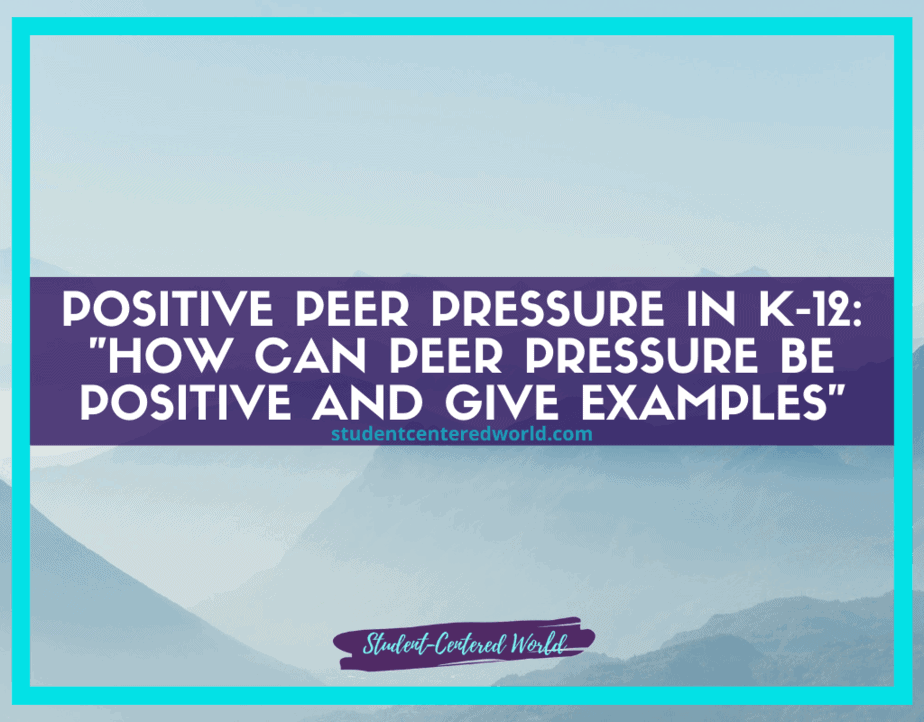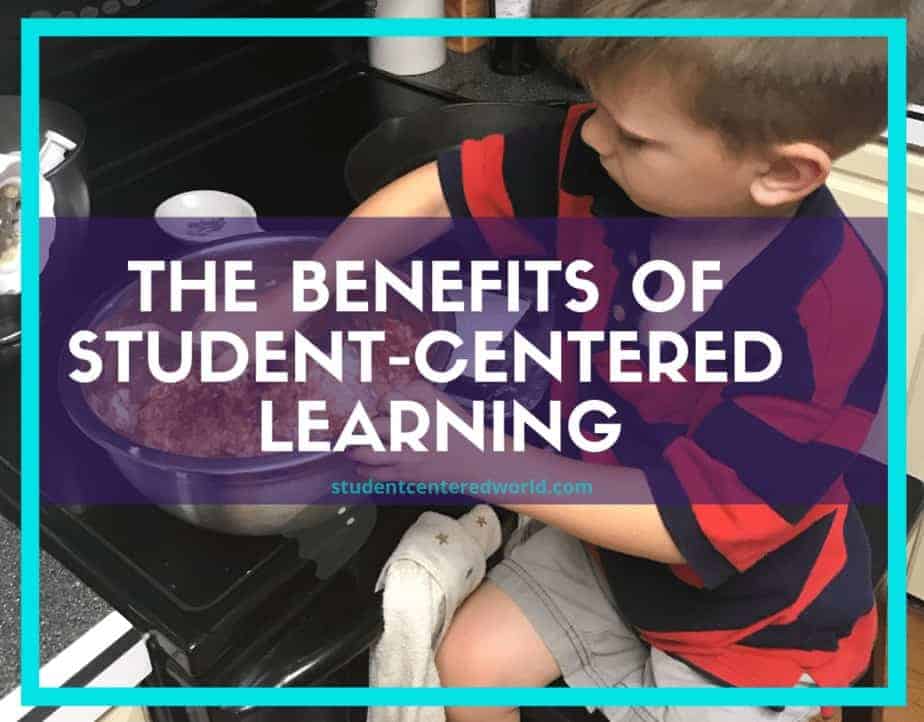Comprehensive Guide to K-12 Teacher-Centered Versus Student-Centered Learning
One constant in every classroom, no matter what style of teaching an educator buys into, is that the teacher is in charge of everything that goes on in that classroom. Often when comparing teacher-centered versus student-centered learning, there is confusion about whether or not the teacher still has an active role if they move from one model to the other.
Watching classrooms that are teacher-centered versus student-centered are incredibly different in execution, but at the end of the day, the teacher is still in charge of all of the learning that is taking place in that classroom.
The traditional method of teaching that many of us were taught by is a teacher-centered model. The teacher is the holder of knowledge and using formats such as lectures and presentations, the students passively take in the information in order to learn that content.
The student-centered model is crafted and facilitated by the teacher, but the students are more active and collaborative with themselves and each other in order to process and learn the content information.
There are distinct similarities, differences, pros, and cons between teacher-centered versus student-centered learning.
Teacher-Centered Versus Student-Centered Learning in Practice
Most educators were trained to teach in the same manner in which they were taught, which is a teacher-centered classroom. It is uncomfortable for many teachers to think about deviating from this because it is what they know and where their comfort zone lies. This is one of the main hangups when debating between teacher-centered versus student-centered learning.
In a teacher-led classroom, the teacher has full control of everything that goes on in the room from lesson execution to student behavior. The teacher knows exactly what information has been given to the students because they did it themselves. The teacher often feels like it is their responsibility to have 100% control over the distribution of information and deviating from this at all would be shirking their duty.
By keeping this method of teaching, there is a level of comfort and confidence did the teacher is giving the students the exact information that they need to learn.
However, we are currently dealing with Generation Z in the classroom and their attention span is much shorter than previous generations. If a teacher is not distributing information in a way that is engaging to the students, it is easier for the child’s mind to wander, missing imperative information that the teacher thinks they are distributing equally and appropriately.
Soft skills such as collaboration and communication are also muted in a classroom like this as the students do not have regular opportunities to interact with the content material and also their peers. It also does not encourage critical thinking skills in most cases as it is more of an A or sometimes B quadrant in the Rigor and Relevance Framework.
In a student-centered classroom, the teachers are still 100% in charge of crafting each and every lesson, but there are more interaction and collaboration between both the teacher and students and the students themselves. The data proves that students, especially in this generation, become more engaged when they can dive into information that they find intriguing and have the ability to look into based on their own takes on the content.
Multiple soft skills are practiced in every single lesson and students, though all receiving the same baseline content knowledge, often learn topics on a much deeper level because of the amount of engagement they are allowed with the content.
Hesitations when Embracing Student-Centered Learning
For a student or even a teacher who is not well-versed in this method of instruction, it may seem overwhelming at first if not implemented appropriately for success.
Noise levels may be misinterpreted as being off-task, and a teacher who is used to traditional classroom management techniques may feel that they have lost control if students are not quietly seated working independently.
There is a fear often that students are missing the information that they need because a teacher is not telling them what that information is.
However, if this model is implemented appropriately, this is not only not a concern, but it appears on the teacher’s radar much quicker when a student is falling through the cracks or is not as engaged or is struggling.
Knowing Your Students
The key to really distinguishing between teacher-centered versus student-centered learning is knowing your audience and what works best for them. Often students who are seen as gifted struggle with student-centered learning because they’re used to being given information which they easily digest and are able to memorize. Student-centered learning requires students to be hands-on and engaged with the content, not just memorizing it.
Knowing that the students in our classroom today are motivated and excited by very different things than generations before them, it is important to take into consideration what is considered effective learning for them, what makes them want to learn, and what their interests are.

As adults, we have the benefit of being able to know how we learn as individuals and to engage in educational activities that work best for us. Yes, we all have to do things that we don’t want to do sometimes, but we the luxury of knowing what works for us as individuals.
Our students are still learning this, and giving them the tools to be able to learn it quicker will help them in their educational journeys throughout life.
The Teacher in the Teacher-Centered Versus Student-Centered Classroom
To reiterate even further, there is no difference between teacher-centered versus student-centered learning when it comes to the importance of the teacher in the room. The goal of the teacher is still the same, just the execution of their actual work is different.
It is actually more work long-term to run a teacher-led classroom than it is to execute a student-centered one. Though it may be a little bit more work upfront when making the switch to the student center of learning model, over time it is much easier.
Taking into consideration that a student-centered lesson will naturally differentiate for every single child in that room, the time savings of not having to reinvent the wheel for so many different students is refreshing.

Why not adopt a model of instruction that automatically does something that we have been doing manually for years? Teachers still explain, model, and help their students, but they are able to do it on a more personalized basis in the student-led classroom.
Imagine a room where you are able to have one-on-one conversations with every single student in that classroom every single day. You are able to see almost immediately what each and every student is struggling with as opposed to trying to determine those struggles from the front of a classroom having 25 sets of eyes staring back at you.
Achieving Teacher Goals
As a teacher, your main concerns are student achievement, student engagement, and classroom management.
Many teachers believe that a traditional teacher-centered model helps to keep more order in the classroom and there for the other pieces of this fall into place. While yes, a teacher-centered classroom assures the noise volume is kept to a minimum and you are in complete control over the activities that are taking place in the room, student soft skills like collaboration and communication will lack, and you will have students that zone out and miss important information.
With the teacher-led model, students do not learn how to be autonomous when it comes to their own education without, ironically enough, being told how to do it. The student-centered model lends itself to that naturally.
In a student-centered classroom, while it might be noisy and more chaotic, Student engagement is much higher, which has a direct correlation to student learning.
While there is a fear that students may miss content information since they are all digesting it in different ways and at different times, it is much easier for the teacher to recognize when a student is behind or doesn’t understand a concept due to the nature of the structure of the classroom.
Making a Decision
At the end of the day, when comparing teacher-centered versus student-centered learning, it is important to know the students in front of you. Ironically, most teachers think they are taking their students into account when crafting a teaching style, but they often are taking themselves into account. When moving from a teacher-centered versus student-centered model, it is uncomfortable, especially if it isn’t flawless the first time it is executed. Just remember, if we tell our kids that “FAIL” really stands for “first attempt in learning”, shouldn’t we tell ourselves the same?
The differences between teacher-centered versus student-centered learning are clear, but at the same time, there is still one end goal: to make sure our students are learning content in the best, most efficient way.
In looking at Teacher-Centered Versus Student-Centered Learning, it is important to remember one key point: our job is to educate our students in the best way possible. Generation Z is learning differently, so we need to be teaching differently.
Comparing teacher-centered versus student-centered learning is a little tricky because thinking of them as two separate entities would be to view the situation as either/or rather than as both. In this case, it should really be about balancing the two teaching styles in order to maximize student learning and success.
With the teacher-centered versus student-centered debate, we can see that there is not necessarily a right and wrong answer as much as there is an answer that data shows make more sense. We need to find the way that best benefits all involved in order to keep learning positive, effective, and purposeful.
In teaching, which is ultimately our goal, we need to shift from a teacher-centered classroom to a student-centered learning environment. This does not, however, mean that the teacher is no longer in charge of what goes on in class or that they have no responsibility in determining how students are learning. Instead, it means modifying our expectations for what successful teaching looks like so that both teachers and their learners benefit from using this.
It’s curious why the teacher-centered versus student-centered debate keeps engaging (and enraging) those in education. Shouldn’t a teacher’s focus always be on the students?
The student-centered model espouses the belief that children have to take responsibility for their own learning. In doing so, they become more engaged and motivated as learners. This is not unlike how most people want to live their lives as adults. We don’t particularly like being told what to do, how to think, or what to say. So why would we expect students to want that?
The fact is that whether you are choosing teacher-centered versus student-centered approaches (or trying to balance the two), the goal should always be for students to learn content in a way that makes them comfortable and able to be successful. They are the ones being tested after all.
The student-centered approach to teaching has gained traction in recent years, but it can be difficult to pull off successfully without any of the traditional instructional scaffolding that helps kids who are not quite ready for it.
As much as we would like to be able to tell students that they need to take responsibility for their own learning, we also have a responsibility to do everything possible in order to help them succeed. The good news is that by making small changes, you can still move towards student-centered learning, even if you don’t jump in headfirst.
This is where the “center” in student-centered comes into play. You are putting it around your students, not yourself. They are at the center of everything you do and everything that happens in your classroom.

The debate between teacher-centered versus student-centered learning is likely to continue for years to come. Society, the economy, and education all continue to shift in such a way that makes “business as usual” difficult to practice, much less sustain.
As we look ahead at the changes we need to make in order to keep up with technology and social changes, we can see that even more changes are likely to happen in the coming years. There is no way of knowing what those changes will be, so it is best to be ready for anything.
The Main Difference: Learning Experience
The biggest difference between teacher centered versus student centered classrooms is the learning process focusing on active learning as opposed to traditional methods. There are significant differences between these teaching methods in terms of the teacher’s role and what the main focus of the lesson is. With direct instruction, the teacher is giving the students information for them to digest. While this might seem like it meets learning goals, it is not the most effective learning environment for our Generation Z and Generation A students.
In student-centered classrooms, best practices include immersing students within the content so they learn how to take a closer look from a practical approach. There is a focus on problem solving, small groups, and a reorganization of class time. It is forming citizens who are interested in lifelong learning within the real world because, by the time they get there, they’re used to it. It is using content as a learning tool as opposed to the end product. While a traditional approach works with small student groups, you’ll find that students’ learning levels and engagement will skyrocket (yes, even in this climate).
If we learned anything about the path our students’ learning is taking, we just need to think back to distance learning. Our teachers’ roles changed and forever altered our professional experiences. Teachers who were trying to take a similar approach to what they were traditionally doing in the classroom found themselves drowning, fast. However, those faculty members who made the switch found ways to make it work and are using a lot of those same techniques in the classroom now to get their students motivated and engaged in the content.
The good thing is that these techniques are universal and once you grasp them as a teacher, the sky is the limit for what is possible within your classroom.
Stop Driving the Teacher Struggle Bus
Are you struggling with student engagement, apathy, or keeping your class on track?
💫💫 There’s hope! 💫💫
Join my free teacher workshop “Choosing Choice” and in just 60 minutes, you’ll craft a practical plan to revitalize your teaching. Discover the magic of student choice in boosting engagement, gain quick implementation ideas, and explore strategies for year-long success.
Unlike overwhelming workshops, my approach guides you in real-time, providing more classroom options, reducing stress, and giving you more personal time.
Plus, you’ll earn a 1-hour professional development certificate and have 7 days of access.
Don’t miss this chance to transform your teaching; click below to secure your spot now!




